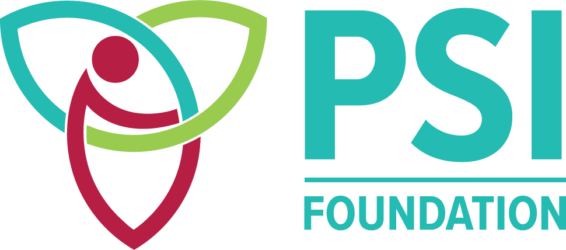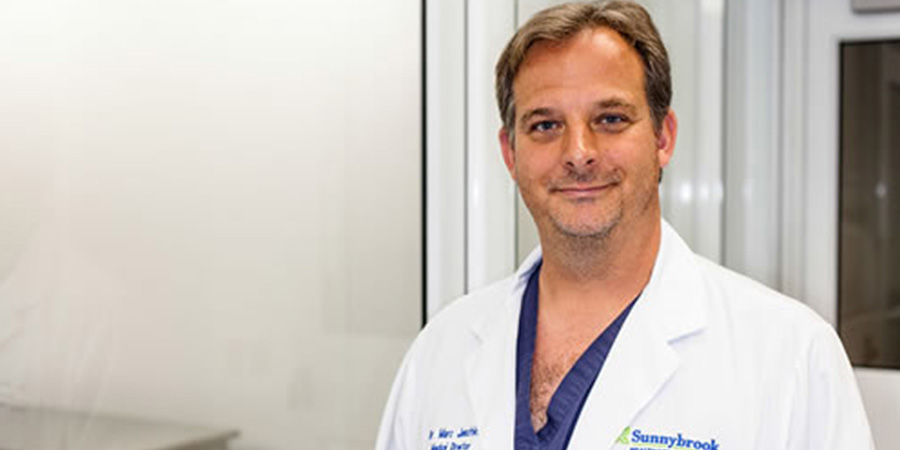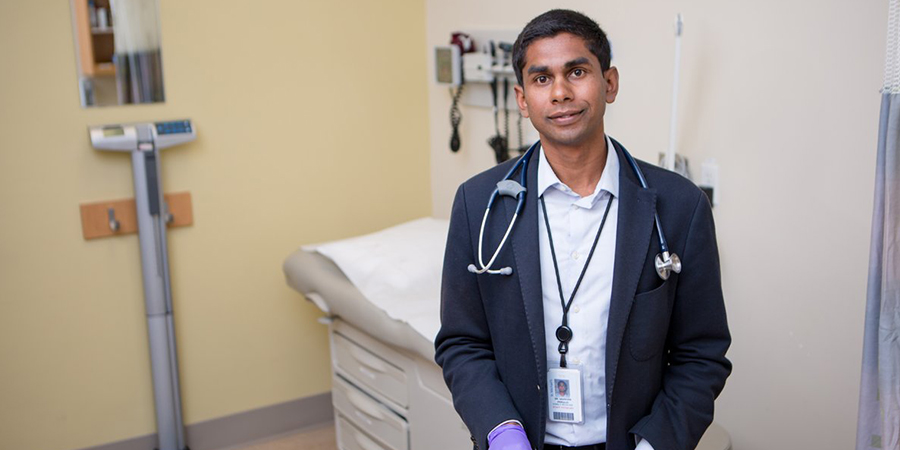How did the PSI Funding Help with the Study?
The funding via the PSI Foundation enabled groundbreaking work to provide evidence that glucose can be controlled in severely-burned patients via novel perturbations and that this modulation of glucose is beneficial in terms of outcomes after a burn injury. These results are ultimately leading to an ongoing large prospective clinical trial which hopefully will confirm the benefit of the perturbation.
Description:
PSI Foundation funded Dr. Marc Jeschke of Sunnybrook Health Sciences Centre in Toronto for his study Glucose control in severely burned patients: mechanisms and therapeutic potential. In 2010, PSI approved $165,000 for his 2 year study.
Dr. Jeschke is a Professor in the Department of Surgery and the Department of Immunology at the University of Toronto. He is also the Director of the Ross Tilley Burn Centre and Senior Scientist at the Sunnybrook Research Institute.
Dr. Jeschke has had several papers resulting from this research, including publications in Lancet and the Annals of Surgery.
Publications
- Abdullahi A, Amini-Nik S, Jeschke MG. Animal models in burn research. Cell Mol Life Sci. 2014 Apr. 2014 Apr 9. [Epub ahead of print].
- Stanojcic M, Chen P, Harrison RA, Wang V, Antonyshyn J, Zúñiga-Pflücker JC, Jeschke MG. Leukocyte Infiltration and Activation of the NLRP3 Inflammasome in White Adipose Tissue Following Thermal Injury. Crit Care Med. 2014 Mar. 2014 Feb 26. [Epub ahead of print].
- Diao L, Marshall AH, Dai X, Bogdanovic E, Abdullahi A, Amini-Nik S, Jeschke MG. Burn Plus Lipopolysaccharide Augments Endoplasmic Reticulum Stress and NLRP3 Inflammasome Activation and Reduces PGC-1α in Liver. Shock. 2014 Feb. Feb;41(2):138-44. doi: 10.1097/SHK.0000000000000075.
- Jeschke MG, Pinto R, Herndon DN, Finnerty CC, Kraft R. Hypoglycemia Is Associated With Increased Postburn Morbidity and Mortality in Pediatric Patients. Critical Care Medicine. 2013 Dec. 2013 Dec 23. [Epub ahead of print].
- Jeschke MG, Herndon DN. Burns in children: standard and new treatments. Lancet. 2013 Sep. Lancet. 2013 Sep 10. doi:pii: S0140-6736(13)61093-4. 10.1016/S0140-6736(13)61093-4. [Epub ahead of print].
- Jeschke MG. Clinical review: Glucose control in severely burned patients – current best practice. Crit Care. 2013 Jul. 2013 Jul 25;17(4):232. [Epub ahead of print].
- Jeschke MG, Finnerty CC, Kulp GA, Kraft R, Herndon DN. Can we use C-reactive protein levels to predict severe infection or sepsis in severely burned patients? Int J Burns Trauma. 2013 Jul. 2013 Jul 8;3(3):137-43. Print 2013.
- Kraft R, Herndon DN, Mlcak RP, Finnerty CC, Cox RA, Williams FN, Jeschke MG. Bacterial respiratory tract infections are promoted by systemic hyperglycemia after severe burn injury in pediatric patients. Burns. 2013 Sep. 2013 Sep 25. doi:pii: S0305-4179(13)00229-5. 10.1016/j.burns.2013.07.007. [Epub ahead of print].
- Hiyama Y, Marshall AH, Kraft R, Arno A, Jeschke MG. Fenofibrate does not affect burn-induced hepatic endoplasmic reticulum stress. J Surg Res. 2013 Jul. 2013 Jul 4. doi:pii: S0022-4804(13)00659-8. 10.1016/j.jss.2013.06.029. [Epub ahead of print].
- Jeschke MG, Gauglitz GG, Finnerty CC, Kraft R, Mlcak RP, Herndon DN. Survivors Versus Nonsurvivors Postburn: Differences in Inflammatory and Hypermetabolic Trajectories. Ann Surg. 2013 Apr. 2013 Apr 10. [Epub ahead of print].
- Brooks NC, Marshall AH, Qa’aty N, Hiyama Y, Boehning D, Jeschke MG. XBP-1s is Linked to Suppressed Gluconeogenesis in the Ebb Phase of Burn Injury. Mol Med. 2013 Mar 15. doi: 10.2119/molmed.2012.00348. [Epub ahead of print].
- Kraft R, Herndon DN, Finnerty CC, Shahrokhi S, Jeschke MG. Occurrence of Multiorgan Dysfunction in Pediatric Burn Patients: Incidence and Clinical Outcome. Annals of Surgery. 2013 Mar 18. [Epub ahead of print].
- Marshall AH, Brooks NC, Hiyama Y, Qa’aty N, Al-Mousawi A, Finnerty CC, Jeschke MG. Hepatic Apoptosis Postburn Is Mediated by C-Jun N-Terminal Kinase 2. Shock. 2013 Feb;39(2):183-8.
- Hiyama Y, Marshall AH, Kraft R, Qa’aty N, Arno A, Herndon DN, Jeschke MG. The Effects of Metformin on Burn Induced Hepatic Endoplasmic Reticulum Stress in Male Rats. Mol Med. 2013 Mar 5;19:1-6.
- Kraft R, Herndon DN, Finnerty CC, Hiyama Y, Jeschke MG. Association of Postburn Fatty Acids and Triglycerides with Clinical Outcome in Severely Burned Children. J Clin Endocrinol Metab. 2013 Jan;98(1):314-21. doi: 10.1210/jc.2012-2599. Epub 2012 Nov 12.
- Kulp GA, Tilton RG, Herndon DN, Jeschke MG. Hyperglycemia exacerbates burn-induced liver inflammation via noncanoncial NF-κB pathway activation. Molecular Medicine. 2012 Sep 7;18:948-56.
- Jeschke MG*, Williams FN*, Finnerty CC, Rodriguez N, Kulp GA, Ferrando AA, Norbury WB, Suman OE, Kraft R, Branski LK, Al-mousawi A, Herndon DN. The effect of ketoconazole on post-burn inflammation, hypermetabolism and clinical outcomes. PLoS One. 2012;7(5):e35465. Epub 2012 May 11.
- Song J, Finnerty CC, Herndon DN, Kraft R, Boehning D, Brooks NC, Jeschke MG. Thermal injury activates the eEF2K-dependent eEF2 pathway in pediatric patients. JPEN. 2012 Sep;36(5):596-602.
Papers Published on Foundation Funded Projects:
Palmitate differentially regulates the polarization of differentiating and differentiated macrophages
Reliable scar scoring system to assess photographs of burn patients
Predictive value of IL-8 for sepsis and severe infections after burn injury: a clinical study
Healthcare costs of burn patients from homes without fire sprinklers
Stress induced insulin resistance in regards to cellular organelles, inflammasome and inflammation and lipids
Leukocyte infiltration and activation of the NLRP3 inflammasome in white adipose tissue following thermal injury
- Crit Care Med. 2014 Jun;42(6):1357-64
Ex vivo expansion of hematopoietic stem and progenitor cells: recent advances
- World J Hematol 2014 May 6; 3(2): 18-28
Hypoglycemia is associated with increased postburn morbidity and mortality in pediatric patients
- Crit Care Med. 2014 May;42(5):1221-31
Survivors versus nonsurvivors postburn: differences in inflammatory and hypermetabolic trajectories
- Ann Surg. 2014 Apr;259(4):814-23
Burn plus lipopolysaccharide augments endoplasmic reticulum stress and NLRP3 inflammasome activation and reduces PGC-1α in liver
- Shock. 2014 Feb;41(2):138-44
The use of dermal substitutes in burn surgery: acute phase
- Wound Repair Regen. 2014 Jan;22(1):14-22
Propranolol Improves Impaired Hepatic Phosphatidylinositol 3-Kinase/Akt Signaling after Burn Injury
- Mol Med, 2012 May 9;18:707-11
Hyperglycemia exacerbates burn-induced liver inflammation via noncanonical nuclear factor-κB pathway activation
- Mol Med, 2012 Sep 7;18:948-56
The Effects of Metformin on Burn Induced Hepatic Endoplasmic Reticulum Stress in Male Rats
- Mol Med, 2013 Jan 16. Epub ahead of print]
Norepinephrine inhibits macrophage migration by decreasing CCR2 expression
- PLoS ONE 8(7):e69167
Endoplasmic reticulum stress and insulin resistance post-trauma: similarities to type 2 diabetes
- J Cell Mol Med 2012 Mar;16(3):437-44
XBP-1s Is Linked to Suppressed Gluconeogenesis in the Ebb Phase of Burn Injury
- Mol Med 2013 May 20;19:72-8
Genomic responses in mouse models poorly mimic human inflammatory diseases
- Jeschke, M.G.
Enteral nutrition support in burn care: a review of current recommendations as instituted in the Ross Tilley Burn Centre
- Jeschke, M.G.
Burn size and survival probability in paediatric patients in modern burn care: a prospective observational cohort study
- Lancet, 2012 Mar 17;379(9820):1013-21



